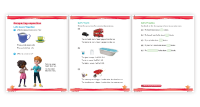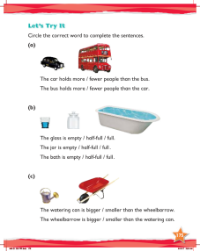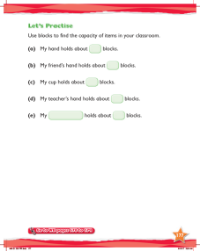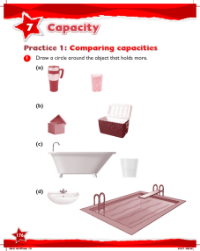Max Maths, Year 1, Learn together, Comparing capacities
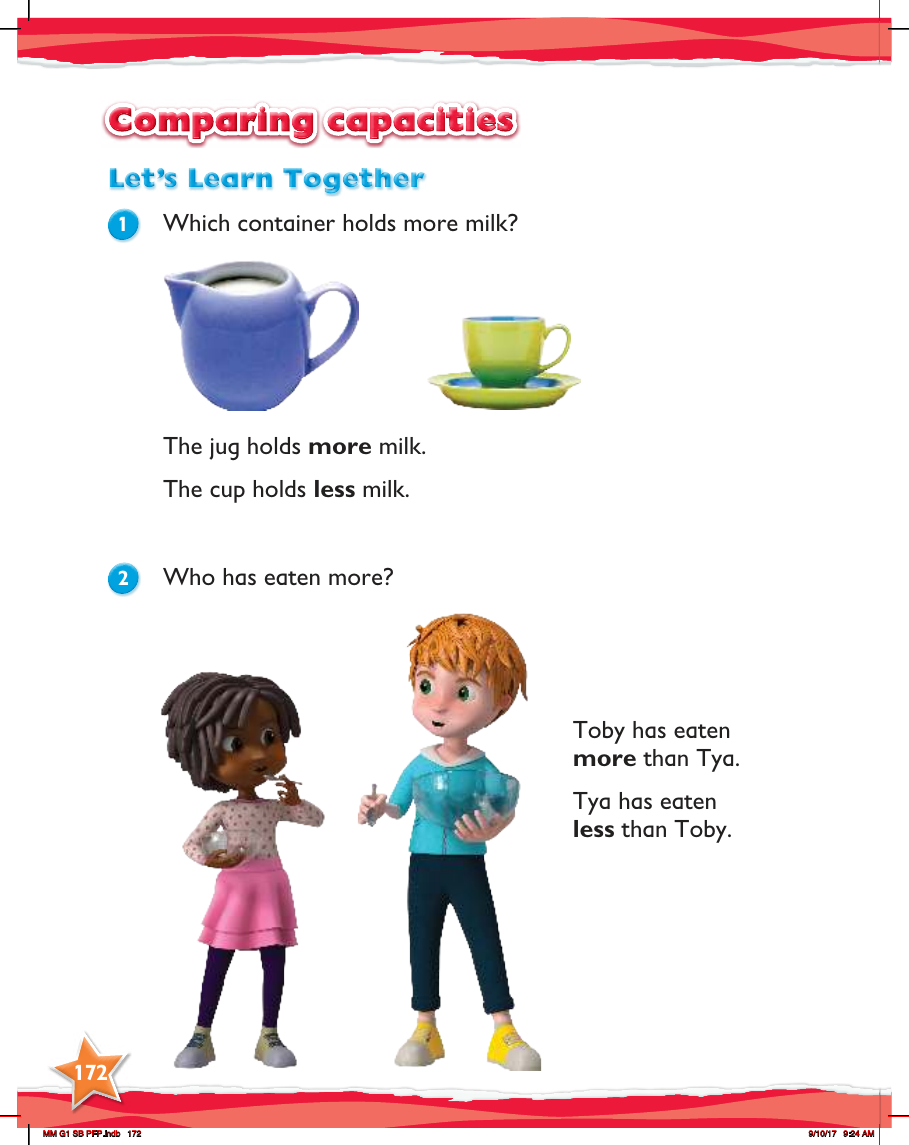
In the 'Max Maths, Year 1, Learn Together' book, students are introduced to the concept of comparing capacities in a simple and engaging manner. The section on 'Comparing Capacities' provides visual examples to help young learners understand the idea of more, less, and most. In the first activity, children are asked to determine which container can hold more milk by comparing a jug and a cup. The answer is clearly illustrated: the jug holds more milk, while the cup holds less. This comparison helps establish basic concepts of volume and capacity in a relatable context.
Further exercises in the book continue to build on this foundation. Children compare how much Toby and Tya have eaten, with Toby having eaten more and Tya less, reinforcing the terms 'more than' and 'less than'. They also look at two boxes to identify which one holds the most and the least, helping them to grasp the extremes of capacity. Moreover, the activities involve comparing vases to find out which one holds the least amount of content, and assessing the water levels in different jugs, where Jug A is full, Jug B is half-full, and Jug C is empty. Lastly, they evaluate the amount of sand in a set of buckets, learning to describe them as empty, full, and half-full. These exercises not only teach children about capacity but also introduce them to comparative and superlative forms in a practical way.
